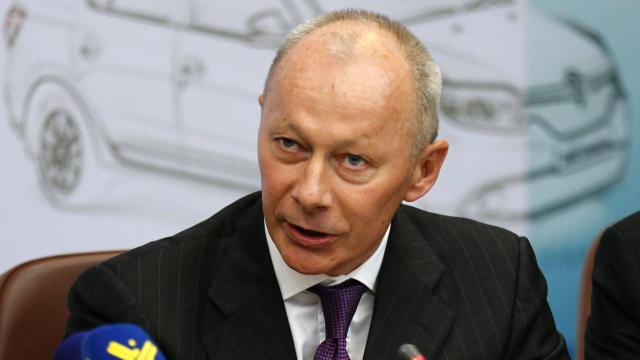The French automaker Renault signed on Monday, an important agreement in Iran to eventually produce 300,000 cars a year in the country.
The French automaker Renault signed on Monday, an important agreement in Iran to produce 300 000 cars per year term in the country via a joint venture that will be an investment of 660 million euros.
The new joint venture will be owned 60% by Renault and 20% by the Organization for Industrial Development and Renovation -a iranien- public body and by the Iranian private company Parto Néguine Nasseh for the remaining 20%.
“The first phase of the agreement worth 660 million euros expected 150,000 building cars” a year, said Mansour Moazami, head of the Organization for the renovation and industrial development.
The joint venture will be based in Saveh, about 120 kilometers southwest of Tehran, in an existing plant to be expanded and modernized. It will produce Renault Symbol models and new Duster Dacia Romanian brand bought by Renault.
The first cars will be sold and produced in a year and a half, said Mr. Moazami.
The second phase will start in 2019 and will last three years. Eventually, the production of both Symbol and Duster models will reach 300,000 cars per year.
Strategic partner
Under the terms of the agreement, 30% of vehicles and parts produced in the Iranian factory will be exported.
“We are pleased to sign this historic agreement […] For Renault, Iran is known for its large industrial capacity, infrastructure for the automotive industry, the skills of its human resources and its unique geopolitical position” , said Thierry Bolloré, the number two of the French group, which signed the agreement.
“This is a unique agreement in terms of investment, technology transfer, localization, development of Iranian talent, creating an engineering center and production of modern cars […] and export “ , he said.
“Renault has demonstrated its commitment with its presence continuously since the beginning of its operations in 2004 in Iran and this signing confirms our great intention and commitment to long-term operations in Iran […] a strategic partner in the field of automobile industry “ , further added M. Bolloré.
A “strategic agreement” was signed in September 2016 in Paris between Renault and the Iranian Minister of Industry Mohammad Reza Nematzadeh for the creation of this new joint venture in Iran.
The manufacturer Renault is already present in this country of 80 million people with an existing production capacity of 200,000 vehicles per year.
“Our cooperation with our historic partners Iran Khodro and Saipa will continue with strength and grow” further added Thierry Bolloré.
“ The signing of this new joint venture confirms the strategic choices we have made in this country and opens new perspectives in a market expected to reach 2 million vehicles in 2020” , said Stefan Mueller, Executive Committee member of Renaut, a statement from the group.
Similarly, the agreement provides that the joint venture will work “with five Iranian companies for the supply of spare parts” , according M. Nematzadeh, who attended the signing ceremony. “We hope to increase this figure to 60 companies” , he added. However, these companies will have to meet the conditions of quality and price usually decisive.
PSA and Total have also already turned to Iran
On 21 June 2016 the French competitor Renault, PSA, signed a final agreement for a joint venture with one of its historic partners, Iran Khodro to produce Peugeot, sealing its industrial return to the country in the wake of the lifting of international sanctions after the agreement on the Iranian nuclear issue. The joint venture PSA-Iran Khodro should lead to a production of Peugeot 208 vehicles, 2008 and 301.
Since the nuclear agreement reached in July 2015 between Iran and the major powers, the French companies have made a comeback in Iran.
The French group Total, at the head of an international consortium with the Chinese CNPCI signed early July a gas agreement of $ 4.8 billion with Tehran to develop Phase 11 of the offshore South Pars gas field, located in the Gulf.
These European investments are made despite the US pressures that have since adopted new sanctions against Iran.




